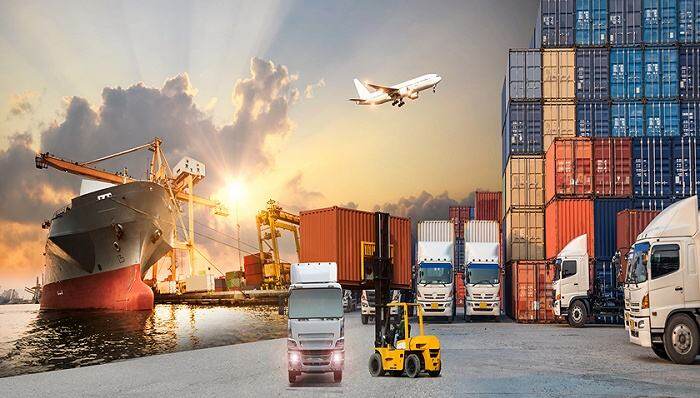Email format error
Email cannot be empty
Email already exists
6-20 characters(letters plus numbers only)
The password is inconsistent
Email format error
Email cannot be empty
Email does not exist
6-20 characters(letters plus numbers only)
The password is inconsistent


Transforming Distribution: The Tech Impact
Introduction
In the dynamic landscape of logistics distribution services, technology plays a pivotal role in ensuring efficiency, accuracy, and adaptability. From warehouses to transportation management, the integration of cutting-edge technologies transforms traditional supply chains into agile and responsive networks. In this article, we delve into the multifaceted impact of technology on logistics distribution services, exploring the ways in which innovations enhance every facet of the supply chain.
I. Warehouse Management: A Technological Renaissance
Warehouse Management Systems (WMS): A Cornerstone of Efficiency
In the realm of logistics distribution services, warehouse management systems (WMS) emerge as the linchpin for seamless operations. WMS not only facilitates inventory tracking but also orchestrates the intricate dance of goods within the warehouse. The implementation of WMS streamlines processes, improving the overall efficiency of logistics distribution services. As companies pivot towards digital transformations, the adoption of WMS becomes imperative for those aiming to stay competitive in the fast-paced world of distribution.
Synonymous with WMS, the term 'inventory optimization' becomes paramount. By leveraging technology to its fullest, logistics providers can fine-tune their inventory management strategies, minimizing waste and mitigating the risks associated with stockouts.
II. Revolutionizing Transportation Management: Beyond Routes and Schedules
Transportation Management Systems (TMS): Navigating the Logistics Maze
Logistics distribution services extend beyond the warehouse's confines, and here, Transportation Management Systems (TMS) emerge as game-changers. TMS revolutionizes route planning, offering logistics providers the ability to optimize delivery schedules. This optimization not only ensures timely deliveries but also contributes to cost reductions, a critical consideration in the competitive logistics landscape.
In a world where 'real-time tracking' has become synonymous with reliability, TMS allows for granular visibility into the movement of goods. The integration of telematics further enhances this visibility, providing insights into vehicle performance, fuel efficiency, and adherence to schedules.
III. The Tapestry of Tracking and Visibility Solutions
RFID Technology: Weaving a Web of Precision
RFID technology, often referred to as the silent hero of logistics distribution services, transcends the limitations of traditional barcode systems. Its ability to offer real-time visibility into inventory movements fosters a culture of transparency and accountability. From a bird's-eye view, RFID becomes synonymous with 'precision,' a crucial element in ensuring that the right products reach the right destinations at the right time.
The integration of the Internet of Things (IoT) adds another layer to this tapestry, connecting assets and systems in real time. As a result, logistics providers can make data-driven decisions, optimizing their distribution networks and minimizing bottlenecks.

IV. AI in Logistics: Predicting, Learning, and Adapting
Predictive Analytics: Anticipating Demand in a Dynamic Market
Artificial intelligence (AI) introduces an era of predictive analytics, allowing logistics distribution services to anticipate demand patterns with unprecedented accuracy. The synergy between AI and logistics becomes synonymous with 'proactive adaptability,' a trait essential in an ever-evolving market. By harnessing machine learning algorithms, companies can refine their distribution strategies, minimizing overstock and stockouts.
Beyond forecasting, AI-driven technologies contribute to dynamic routing and scheduling. This not only optimizes the distribution process but also aligns seamlessly with the overarching goal of reducing environmental impact by choosing the most efficient routes.
V. Challenges and Considerations in the Technological Paradigm Shift
Integration Challenges: Striking a Balance
The integration of these technologies is not without its challenges. Logistics distribution services often face the hurdle of integrating different systems seamlessly. The keyword here is 'harmony.' Striking a harmonious balance between various technological components is crucial to realizing the full potential of these innovations.
Additionally, data security and privacy concerns loom large. As logistics providers digitize their operations, ensuring robust security measures becomes synonymous with 'trust.' Establishing trust in the digital realm is paramount for the seamless adoption of technological solutions.
VI. Future Trends: Automation, Blockchain, and Beyond
Automation and Robotics: Redefining the Logistics Landscape
The future of logistics distribution services lies in automation and robotics, often referred to as the 'evolutionary phase.' Robotics in warehouses and autonomous vehicles in last-mile delivery herald a new era of efficiency and sustainability. These technologies, synonymous with 'precision' and 'innovation,' redefine how goods move through the supply chain, promising quicker deliveries and reduced environmental impact.
Looking further ahead, blockchain technology emerges as a disruptor, ensuring transparency and traceability in the supply chain. Synonymous with 'immutable trust,' blockchain has the potential to revolutionize how information is shared and verified across the logistics ecosystem.
Conclusion
In the ever-evolving realm of logistics distribution services, technology emerges as the catalyst for change. From the intricacies of warehouse management to the dynamic landscape of transportation, the tapestry of tracking and visibility solutions, and the predictive power of AI, every facet of the supply chain undergoes transformation. Embracing these changes, understanding the challenges, and envisioning the future trends position logistics distribution services at the forefront of innovation and efficiency. The integration of technology is not just a choice but a strategic imperative for navigating the future of logistics.

